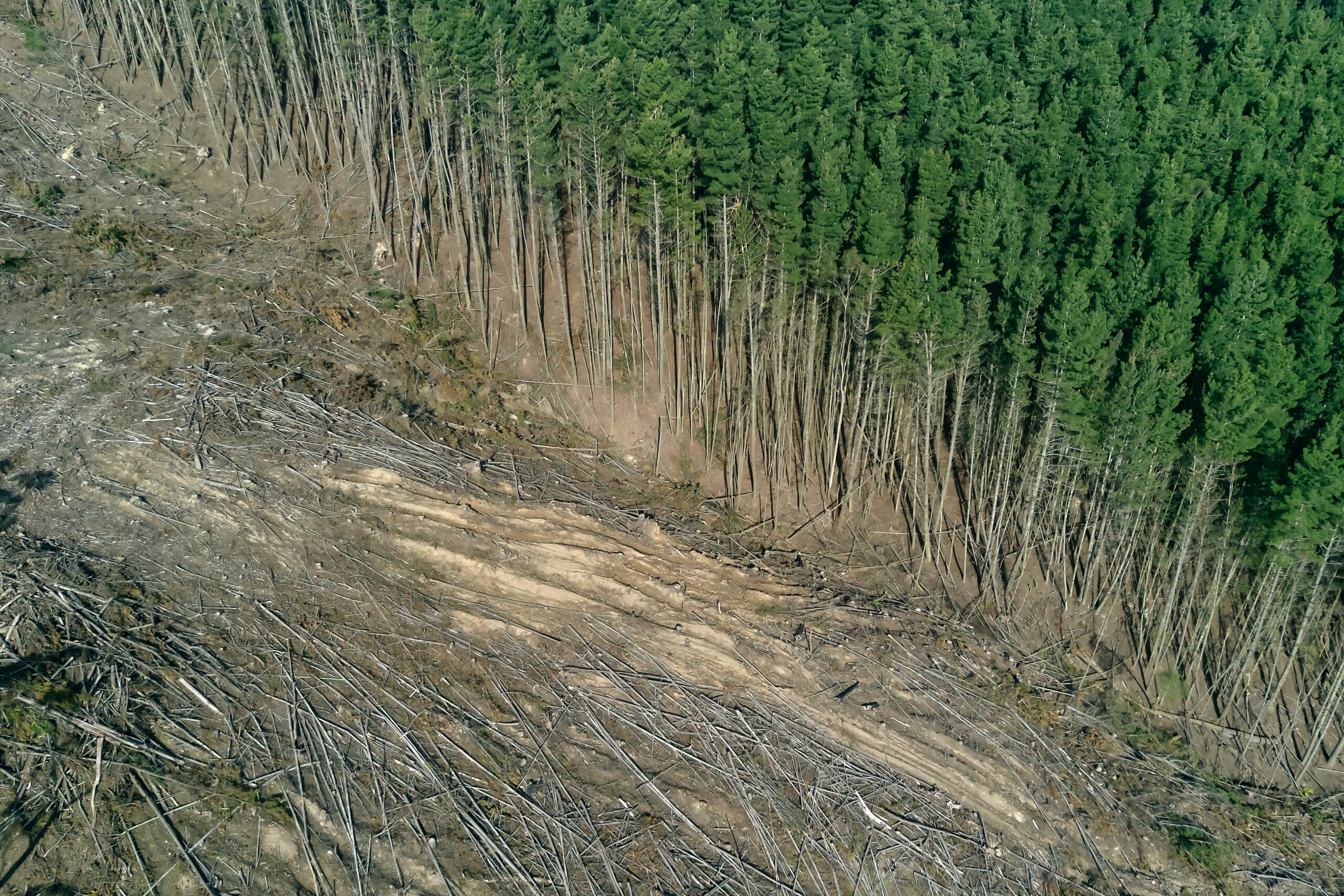Table of Contents
As far as materials go, wood is something of a poster-girl for sustainability. We are often encouraged to swap single-use plastic cutlery for wooden alternatives, you can now buy wooden iPhone cases, and even sustainable wooden Chevy supercars. The construction industry is no different. Since the invention of Cross Laminated Timber (CLT) in Europe in the 1990s, wood is now a viable alternative to cement and steel for structures up to 12 stories high. France takes the lead on regulation in the field and have mandated that all new buildings be built from 50% timber or other natural materials, a policy which has been made effective this year. From the designer’s perspective it’s attractive, warm, and there have even been studies to show that wooden structures cause a drop in blood pressure, and have a calming effect. One report found that timber interiors improved patients’ recovery in hospital. As pressures to address the construction sector’s emissions mount, governments are legislating for increased timber use. But as controversy with biomass power stations have shown, it’s not always as simple as ‘wood is good’. So, is timber the answer?
There are three main options for a building’s primary structure: timber, steel or concrete. Innovation in the timber industry has yielded mass timber. Between these three, with current manufacturing technologies, mass timber clocks up the lowest embodied carbon. As trees grow, they also sequester carbon from the atmosphere, although it’s crucial that these benefits are not overstated and we’ll get into the question of sequestration later in this article. The invention of CLT, the most commonly used type of mass timber, allowed for timber sturdy enough to build as high as 12 stories, or 85 feet high as classified in the ICC’s International Building Code. The CLT works by building up layers of planks at right angles, bonding the individual parts with glue and pressure. The result is strong, durable, rigid and insulates both heat and sound.
Mass timber is the product of compressing wood in layers resulting in exceptionally strong and versatile large structural panels, posts, or beams.
Embodied carbon refers to all the CO2 emitted in extraction, production, and demolition.
It has been forecast that the timber frame sector will grow by £150m by 2026. Award-winning architect Alex de Rijke labelled this technology ‘the new concrete’. CLT buildings weigh around 80% less than their concrete counterparts, reducing cost in laying a building’s foundations. Timber residential buildings have been seen to perform well in earthquakes, simply because heavier structures are more dangerous in seismic events. As the world looks to adapt to climate change, timber looks to be a better alternative to concrete. It has been predicted that 63% of the global population will live in cities hit by heat waves in the next 15 years. Timber has relatively low thermal conductivity, meaning it will be easier to keep wooden buildings cool during those extreme weather events.
How does timber hold up?
The only studies comparing timber’s advantages to that of steel and concrete have been conducted by industry stakeholders, so should be taken with a pinch of salt. But one such study found that mass timber buildings are roughly 25% faster to construct than concrete buildings and require 90% less construction traffic – its steel and concrete counterparts need more and heavier vehicles to arrive at the construction site.
Timber is generally understood to be cheaper than concrete. But this can be difficult to compare as, while wood is initially cheaper, high maintenance costs can be incurred due to its susceptibility to mold growth, water damage, decay and termites.
As with many resources, the timber industry has been hit by supply shortages. Post global lockdowns, the price of timber rose sharply in 2021. Sweden, one of the biggest global timber exporters, recorded its lowest stock levels for 20 years. Many in the industry pointed to endemic wildfires in 2020 and 2021. As Canada’s yield reduced so much due to threats from fire, pests and disease, global stores took a hit. With architects and designers looking to decarbonize the built environment, the World Bank predicted a 4% rise in demand for wood products for the next 30-40 years. At one point in February 2021, one of the biggest European suppliers announced a fixed price for a mere 48 hours. More recently, the war in Ukraine and resulting sanctions on Russia and Belarus have put further pressure on ready-made timber construction blocks and birch plywood. The availability of cement has, so far, remained unaffected by the conflict.
But what about the fire risks? In the past, timber has made regulators very nervous. It’s easy to see why – fires tend to persist in the cultural memory. After the Grenfell Tower tragedy in the UK in 2017, London mayor Sadiq Khan unveiled rules governing the allocation of funds worth £3.46bn to build 29,500 homes in the capital. The rules included a “ban on combustible materials being used in external walls for all residential development, regardless of height.” Timber was included, despite the fact that timber was not used in Grenfell Tower – the disaster came down to foam insulation and combustible cladding. All building materials are compromised by fire exposure: steel melts at critical temperature, becomes spaghetti-like, compromising the structure; concrete buckles as it loses all compressive strength. Joe Giddings, architect and environmental activist disagrees that timber presents an increased risk. Timber frames char in fire, exhibiting a self-extinguishing effect, preserving the building’s structural elements. “It’s about spreading that knowledge and increasing competency in the industry.” Giddings said. Similarly to throwing a large log on a fire, mass timber takes a considerable amount of time to catch fire, and when it does, the perimeter chars, slowing burning down.
An often-touted benefit to timber is its carbon sequestration potential. It’s true, it’s better to use wood for longer-life products such as buildings. A Life Cycle Assessment of residential buildings in Sweden found that timber had 42% lower embodied carbon that its concrete counterparts, so this would suggest that opting for timber would be the good environmental choice. But there’s often the temptation to overemphasise timber’s capacity for carbon sequestration. The conservative approach to assessing LCAs in wooden buildings is to assume that biogenic carbon is only stored temporarily, and is returned to the atmosphere at the end of its life, and therefore the overall impact is scant.
An LCA is a process of evaluating the effect that a product has on the environment over the entire period of its life.
And there’s a reliability problem in building LCAs more widely. We can’t predict the fate of a building and its components under future ownership, and there are often changes made to end of life plans. A building could be pulled down or repurposed decades, or even centuries away from the architect’s original intent. And obviously, future impacts are modelled on today’s technologies which, as with most things in climate discussions, stand to be very different in five, ten, twenty, a hundred years time. But as data for all construction materials is hard to predict in LCAs, there is a kind of net unreliability effect.
It has been reported that 49% of timber’s greenhouse gas emissions are incurred during transportation. Generally, fuel consumption in lorries transporting timber is higher than average as the vehicles have to navigate rural roads, hilly terrain and gravelled forests roads – all harder on the lorry’s engine. As a result, timber lorries have a shorter lifespan, lasting around 770,000 km rather than the standard 1,000,000. So, technologies to create clean energy HGVs will massively reduce emissions from the timber industry.
Turning forests into timber
All the benefits of timber become immaterial if the trees the timber is sourced from are not cut down using sustainable forestry practices. As buildings are classified under “long life” products, construction is one of the sectors which should be using wood. Right now, wood products which will last longer than 4 years account for 20% of deforestation. Lina Burnelius, project leader at Protect the Forest Sweden said that, going forward, of course we will have to upscale timber usage in construction, but we will need to revolutionise forestry practices to do that. She said: “If you built a house in wood today, you would not be building a climate and environment friendly house, because you would be buying wood products that have an enormously negative climate impact due to the current forestry model the world has today.”
The latest Intergovernmental Panel on Climate Change report makes it clear that in the interests of carbon sequestration and biodiversity, 40% of the forest must be protected. Climate models assume that carbon sinks are expanding every year, but in reality they are shrinking. Deforestation is expected to triple by 2050. Not one single player: company, region, or country currently protects even 30% of their land. “Forestry is speeding up in the wrong direction.” Burnelius said. “Logging rates are increasing, as is greenwash, and no one is implementing what needs to be done.”
Green deserts
The problem with increased timber demand is its encouraging businesses to replace old growth forests with fast-growing monocultures: species like pine or spruce. This is disastrous for biodiversity, when we know that high diversity of trees has a more favourable impact on the ecosystem. 82% of Brazil’s promised restoration is monoculture plantations. In China, plantation-style reforestation is at 99%. These monoculture plantations have been dubbed “green deserts” rather than forests. In Sweden, 380 million trees are cleared a year, and the majority are replaced by monocultures. Ancient trees are a vital host for lichen, a key ingredient to the native reindeer’s diet, risking the specie’s chance of survival. And the bottom line for emissions is that the older the tree, the greater its potential to store carbon and slow climate change.
To ensure that forests remain renewable, care must be taken in extraction. And forests need ‘silent periods’ during which they are supposed to regenerate. But loggers take advantage of ‘sanitary felling’ clauses which recommend felling trees to to stop the spread of disease and pests. At COP26 last year more than 100 global leaders committed to halting deforestation by 2030, with 30 financial institutions promising to eliminate harmful practices from their portfolios by 2025. It still is not clear if the treaty means zero or net zero. If net zero, this would still allow old growth forests to be cleared as long as new forests were planted. Old growth forests sequester hundreds of years worth of carbon and its paramount that we protect them.
Timber, especially mass timber, is a great construction material. We will need it for sustainable development over the coming decades. But the 2030 deforestation pledge must not be taken lightly. Industries must take a more in-depth look at forestry practices in extracting their timber products. Ultimately, old-growth forests must be protected where possible. Governments and corporations cannot be allowed to make the same mistake they did with biofuels – it is not as simple as ‘wood is good’. Increased timber use must come with an eye to biodiversity, the protection of old growth forests, and circular economy practices to phase out cheap, disposable, short-life products.
Lauren is an Assistant Editor at LCR. Her work has focused on geopolitics & climate policy, emissions solutions in the buildings sector, and reviews of new environment titles. Find her LinkedIn here, or email her at lauren@elc-insight.org





